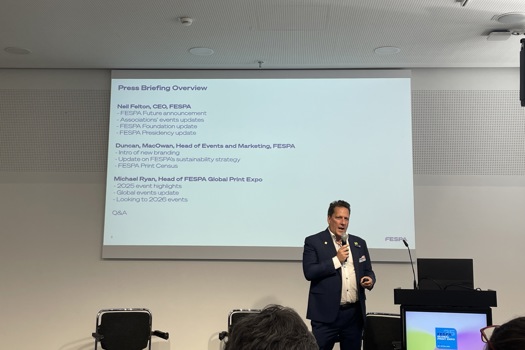Epson’s Stylus Pro 4800 was launched in 2005 and benefited from a new generation of inks that made it ideally suited to the fine art and proofing sectors. The Ultrachrome K3 ink was a significant landmark for Epson and gave the 4800 a serious boost in quality over its predecessor, the 4000.
The 4800 went up against HP’s Designjet 90 and the Canon iPF 5000 and Epson claims it secured 80-90% of the market at the time of its launch. The firm adds that this has been maintained over the years and that more than 2,000 4800s have been sold in the UK alone.
So what was so special about the 4800? The A2-plus unit can handle roll-fed and cut-sheet substrates and incorporates permanent micro-piezo printheads with variable-sized droplet technology plus Epson’s 3.5picolitres Ultra Micro Dot.
Epson claims that the 4800 virtually eliminated metamerism, where colours shift relative to each other under different lighting conditions, and bronzing of basic pigment chemistry compared to its predecessor.
There is a built-in high-capacity paper tray handling up to 250 sheets of plain letter-sized paper or up to 50 sheets of photographic media up to 17x22in. Its four built-in media paths include roll feed, a cut-sheet tray, front-top manual feed and a straight-through front manual feed.
However, unlike its predecessor, the 4800 can’t auto-switch from matte to gloss. The popularity of the 4800 is partly down to the K3 ink – an eight-colour set that includes three black inks with interchangeable photo and matte black cartridges able to reproduce neutral monochrome prints. Compared to the original Ultrachrome set, K3 had purer pigments. High capacity cartridges offer low cost-per-page print and ensure high productivity, says Martin Johns, senior product manager at Epson’s professional graphics department. The K3 inks require all eight slots to print and, because of the additional light black ink, there isn’t room to add both matt and gloss black cartridges. Switching between the two uses a significant amount of ink, but on the plus side, the 4800 is around 20% faster than the 4000, with better image quality in bi-directional printing.
Next generation
The 4800 was eventually replaced in 2007 with the Stylus Pro 4880, which had an even wider colour gamut.
People like the 4800’s compact size, but the 17in format does restrict its application, says Martyn Atkinson, service support manager at Leeds-based dealer Fastek. The company sells new and secondhand Epson machines and Atkinson explains that the smaller size of the 4800 makes it attractive to designers and photographers for low-volume print-for-pay fine art and photographic print markets.
The newer Stylus Pro 4880 is faster and the larger 44in-plus Epson printers tend to be more popular, adds Atkinson. If buying a secondhand model, it’s important to avoid third-party inks which can have a negative effect on the printer’s performance according to Atkinson. It’s a good idea to check the quality of the nozzles by asking for a status print before purchase, he adds. Service contracts and spare parts are available from Fastek.
We have plenty of engineers available for site visits, but it is probably easier and cheaper to send the printer to us. We can arrange pick-up and return delivery, says Atkinson.
Epson will only take back older models as part-exchange depending on the circumstances. Its network of independent specialists offer authorised repair services.
SPECIFICATIONS
Resolution 2,880x1,440dpi
Speeds up to 12.8m2/hr
Nozzle configuration 8x180 nozzles
Smallest droplet size 3.5pcl
Footprint 848x765mm
Weight 40kg
Used price £500
What to look for
Nozzle performance








